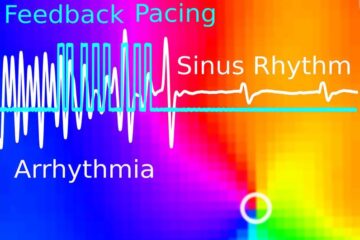QUT researcher discovers Maya mask splendour

Studying tiny shards of paint from the Mayan city of Copan, QUT physical and chemical sciences PhD researcher Rosemary Goodall found evidence of mica that would have made the buildings glitter when hit by the sun.
Ms Goodall said the mica was applied over the red paint of stucco masks on the corners of Copan's well-preserved Rosalila temple, found buried under another pyramid.
“The Rosalila would have been one of the highest buildings of the valley in its time, built by the Maya ruler to exhibit his power and impress his subjects,” Ms Goodall said.
Using a novel analysis technique to examine tiny paint samples, Ms Goodall found two new pigments at the famous Maya archaeological and tourist site in Honduras, Central America.
“I discovered a green pigment and a mica pigment that would have had a lustrous effect,” she said.
“I'm sure that when the sun hit it, it must have sparkled. It must have had the most amazing appearance.”
She said site of Copan was first populated in 1600 BC, but it wasn't until the cultural heyday of AD 400-800 that the Rosalila was built. Mystery surrounds the Maya people, who had largely disappeared by about AD 900.
“I used an infrared analysis technique, called FTIR-ATR spectral imaging, which has not been used for archaeology before,” she said.
“Using this technique and Raman spectroscopy I found the 'signature' of each mineral in paint samples only millimetres in size.
“The Rosalila has more than 15 layers of paint and stucco. Knowing the mineral make-up of the pigments tells us what colours were painted on each layer.
“I also found the stucco changed over time. It became more refined and changed in colour from grey to white.”
Ms Goodall said the Rosalila is a fine example of the Copan buildings, which were painted in red and white, with beautiful masks and carvings painted in multiple colours.
She said it the temple was coated in stucco then filled with rubble and a larger pyramid was built around it, keeping it brilliantly preserved inside.
“The next step of my research will be to take a portable Raman spectrometer to Copan to undertake more paint analysis,” she said.
“The research will help determine the best ways to conserve the Copan ruins – by understanding what's there, you can suggest ways to stop damage, and the tests do not destroy the samples.”
Ms Goodall and her PhD supervisor Peter Fredericks are working in collaboration with Dr Jay Hall (University of Queensland) and Dr Rene Viel (Copan Formative Project, Honduras), who are directing the long-term UQ-led archaeological field research program at Copan.
Media Contact
More Information:
http://www.qut.edu.auAll latest news from the category: Life Sciences and Chemistry
Articles and reports from the Life Sciences and chemistry area deal with applied and basic research into modern biology, chemistry and human medicine.
Valuable information can be found on a range of life sciences fields including bacteriology, biochemistry, bionics, bioinformatics, biophysics, biotechnology, genetics, geobotany, human biology, marine biology, microbiology, molecular biology, cellular biology, zoology, bioinorganic chemistry, microchemistry and environmental chemistry.
Newest articles

Wildfire danger to increase due to climate change
WSL Institute for Snow and Avalanche Research (SLF) researchers expect an elevated wildfire danger in the Alpine Foreland from 2040 onwards due to changing meteorological conditions. The danger currently remains…

Advanced Brain Science Without Coding Expertise
Researchers at Helmholtz Munich and the LMU University Hospital Munich introduce DELiVR, offering a new AI-based approach to the complex task of brain cell mapping. The deep learning tool democratizes…

Gentle defibrillation for the heart
Using light pulses as a model for electrical defibrillation, Göttingen scientists developed a method to assess and modulate the heart function. The research team from the Max Planck Institute for…





















